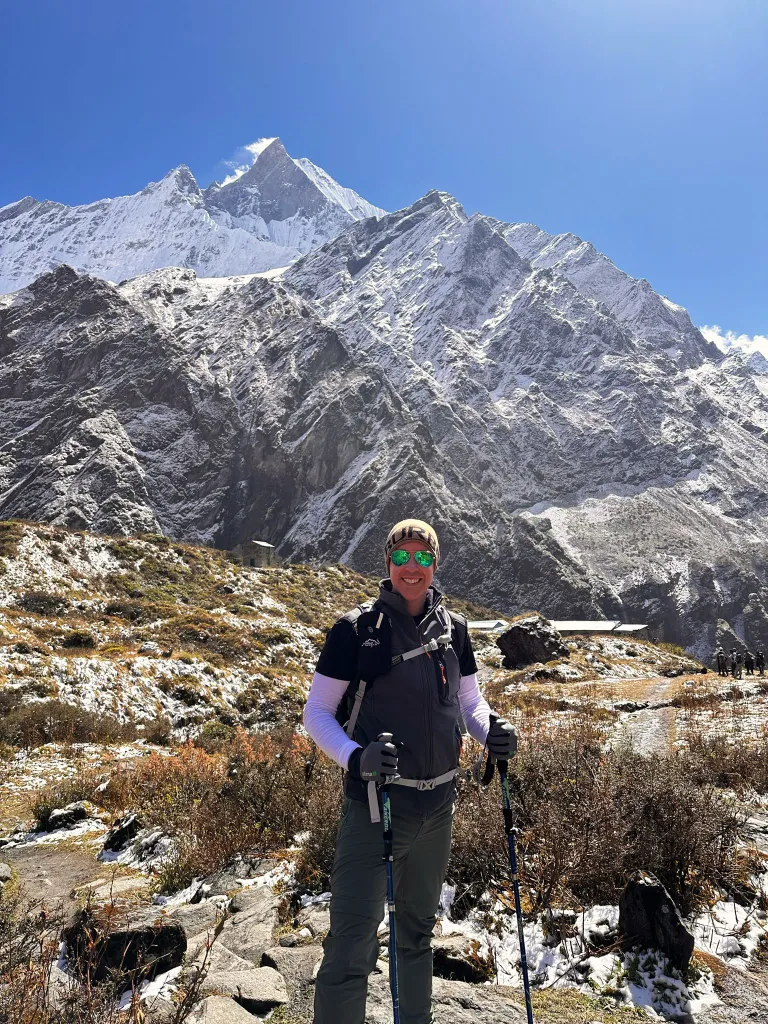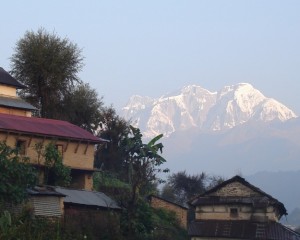Wild Honey Hunting Adventure in Nepal 2025
Honey Hunting is a unique adventure in Nepal, in the Himalayas, offering a unique, adrenaline-filled experience deeply connected to its culture: wild honey hunting. This ancient practice is more than an adventure; it explores nature, culture, and courage. From scaling cliffs to harvesting the liquid gold produced by giant Himalayan bees, honey hunting is a tradition few places on earth can offer.
Let's dive deeper into a comprehensive journey into the art, tradition, and adventure of wild honey hunting in Nepal and what it's like for this adventure in 2025.
What Makes Wild Honey Special?
Wild honey from Nepal, often referred to as mad honey, comes from the Himalayan honeybee (Apis laboriosa), which is the largest honeybee species globally. This honey's psychoactive properties make it unique, as it is derived from the nectar of rhododendron flowers. These flowers contain grayanotoxins, which can induce mild hallucinations or a euphoric state when consumed in small amounts.
However, wild honey isn't just prized for its effects. It boasts numerous health benefits, including antibacterial, anti-inflammatory, and antioxidant properties. It is also considered a delicacy for its rich, complex flavor. For the locals, honey is both a medicinal product and a significant source of income.
A Tradition Rooted in Culture and Spirituality
In Nepal, wild honey hunting isn’t just a way to harvest honey; it’s a sacred ritual. For ethnic groups like the Gurung, Magar, and Rai, honey hunting is steeped in cultural significance. Before a hunt begins, elaborate ceremonies are performed to honor the spirits of the cliffs and the bees.
These rituals involve offerings such as rice, flowers, and prayers to ensure the safety and success of the hunters. The spiritual connection between the hunters and nature reflects a harmonious way of life where respect for the environment is deeply ingrained.
Why Experience Honey Hunting in Nepal?
Participating in or observing a honey hunt is an unforgettable experience. Beyond the adventure of trekking through dense forests and climbing towering cliffs, visitors gain an intimate look into the lives of local communities. Watching seasoned hunters navigate the sheer cliffs, suspended by nothing more than bamboo ladders and ropes, is a testament to human resilience and ingenuity.
Top Destinations for Honey Hunting in Nepal
Nepal is home to several honey-hunting destinations, each offering its unique blend of adventure, natural beauty, and cultural immersion.

1. Lamjung
Lamjung is one of Nepal’s most famous honey-hunting spots. The cliffs here are home to giant bee colonies, and the local Gurung community invites visitors to witness or participate in their traditional hunts. The region also offers picturesque views of the Annapurna range and vibrant villages that make the journey memorable.
2. Gorkha (Nimrung Khola)
Gorkha, the historic district known as the birthplace of Nepal’s unification, is another honey-hunting hotspot. The Nimrung Khola region is particularly popular, offering stunning landscapes and cultural depth. Honey hunting here is a communal activity, and visitors can combine their experience with treks to explore Gorkha’s ancient temples and forts.
3. Myagdi
Myagdi, nestled near the Annapurna range, is renowned for its challenging honey-hunting expeditions. The cliffs are steep, with hives often located at dizzying heights. The experience here is raw and thrilling, perfect for adventure seekers. Travelers can also explore nearby hot springs and waterfalls, making it an excellent multi-day excursion.
4. Bhujung
A gem in the Annapurna Conservation Area, Bhujung is a traditional Gurung village known for eco-tourism and honey hunting. The villagers, skilled in honey-hunting techniques, offer an authentic experience for visitors. Besides honey hunting, Bhujung boasts incredible views of Lamjung Himal and serves as a gateway for treks in the region.
5. Pokhara
While primarily known for its lakes and trekking, Pokhara also offers honey-hunting opportunities in its surrounding hills. Visitors can stay in the comfort of the city while venturing into nearby villages for honey-hunting experiences. The juxtaposition of urban convenience and wild adventure makes Pokhara a unique choice for honey hunters.
Itinerary 1: Lamjung and Gorkha Honey Hunting Expedition
Day 1: Arrival in Kathmandu
Day 2: Kathmandu to Lamjung
Day 3: Honey Hunting in Lamjung
Day 4: Lamjung to Gorkha (Nimrung Khola)
Day 5: Honey Hunting in Gorkha
Day 6: Gorkha to Kathmandu
Day 7: Departure
Itinerary 2: Pokhara, Bhujung, and Myagdi Honey Hunting Adventure
Day 1: Arrival in Kathmandu
Day 2: Kathmandu to Pokhara
Day 3: Pokhara to Bhujung
Day 4: Honey Hunting in Bhujung
Day 5: Bhujung to Myagdi
Day 6: Honey Hunting in Myagdi
Day 7: Myagdi to Pokhara
Day 8: Pokhara to Kathmandu
Day 9: Departure

The Process of Honey Hunting
Honey hunting is a dangerous and intricate process that requires skill, teamwork, and immense courage. Here’s a step-by-step breakdown:
1. Locating the Hives
The first step is to identify cliffs with active hives. These are usually found in remote, inaccessible areas, requiring long treks to reach. Hunters rely on experience and observation to pinpoint the most productive hives.
2. Preparing for the Hunt
Preparation includes gathering traditional tools such as bamboo ladders, ropes, and smokers. Hunters also conduct rituals to seek blessings for a safe and successful expedition.
3. Climbing the Cliffs
Scaling cliffs is the most dangerous part. Hunters use handmade bamboo ladders and ropes to ascend to the hives, often hundreds of meters above the ground. Their agility and confidence are awe-inspiring.
4. Harvesting the Honey
Once at the hives, hunters use smoke to calm the bees. They then cut the honeycombs, carefully lowering them to the ground using ropes. The process demands precision, as one wrong move can lead to fatal consequences.
Traditional Tools and Techniques
The tools used in honey hunting are simple but effective:
- Bamboo Ladders and Ropes: Essential for climbing and safety.
- Smokers: Used to drive bees away without harming them.
- Harvesting Sticks: Long poles with sharp ends for cutting honeycombs.
These traditional methods showcase the ingenuity and adaptability of Nepal’s honey hunters.

The Thrill of Honey Hunting
For participants, the thrill of honey hunting lies in its unpredictability and rawness. The sheer cliffs, buzzing bees, and breathtaking scenery create an adrenaline rush. For observers, it’s a humbling experience to witness the bravery and skill of local hunters.
Tips for Honey Hunting Enthusiasts
- Choose the Right Season: Spring and autumn are ideal for honey hunting in Nepal.
- Stay Fit: Be prepared for strenuous treks and climbs.
- Dress Wisely: Wear protective clothing and sturdy footwear.
- Travel with Experts: Always join an experienced group to ensure safety and authenticity.
What to Expect on a Wild Honey Hunting Expedition
Physical Demands
Wild honey hunting is an exhilarating but physically demanding activity. Expect steep climbs, rough trails, and long days of trekking. Honey hunting is a trek and requires you to scale cliffs and trees, sometimes with just a rope and ladder to help you reach the beehives. While it's an exciting experience, it's essential to be prepared for the physical challenges, including altitude and terrain. For those without prior trekking experience, we recommend hiring a guide and ensuring you're in good physical condition.
Adventure & Thrill
The honey-hunting adventure in Nepal is unlike any other trekking experience. The process involves scaling cliffs and harvesting honey from large beehives on the mountainsides. The sheer thrill of it, combined with local guides' techniques, makes it a once-in-a-lifetime experience. You will be part of a centuries-old tradition that involves brave local hunters.
Local Culture & Traditions
While trekking, you will be immersed in Nepal's indigenous culture and traditions. From the local Gurung and Magar communities in Lamjung and Gorkha to the Thakali and other ethnic groups in Myagdi and Bhujung, you’ll get the chance to learn about their unique customs and lifestyles. Honey hunting is deeply rooted in these communities, and participating in this practice will provide insight into their age-old methods.
Stunning Natural Beauty
Nepal is famous for its breathtaking landscapes; honey-hunting expeditions are a perfect way to witness them firsthand. You'll trek through terraced fields, forests, and hills, often surrounded by panoramic views of the Annapurna and Dhaulagiri ranges. The journey offers a mix of natural beauty and cultural immersion, ensuring you don’t just focus on hunting but also experience Nepal’s diverse ecosystems and terrain.
What to Prepare for Your Wild Honey Hunting Trip

Clothing & Gear
- Sturdy Footwear: Trekking shoes with good grip for rugged terrain.
- Layered Clothing: Dress in layers for temperature control. Include moisture-wicking base layers, a warm jacket, and a waterproof outer layer.
- Sun Protection: Sunscreen, sunglasses, and a wide-brimmed hat to protect from the sun.
- Trekking Poles: These are for added stability on rough terrain.
- Backpack: A daypack to carry water, snacks, a camera, and a light jacket.
Health & Safety
- Travel Insurance: Always opt for a policy that covers trekking and any potential evacuation costs.
- Vaccinations & Medications: Consult your doctor before the trip for recommended vaccinations. Carry any personal medications you might need.
- Altitude Adjustment: Ensure you are prepared for the high altitudes by acclimatizing gradually. Drink plenty of water and listen to your body’s signals.
Permits
- Trekking Permit: Obtain the appropriate trekking permits, including the Annapurna Conservation Area Permit (ACAP) for destinations like Lamjung, Gorkha, and Myagdi.
- Honey Hunting Permit: You may require an additional permit for specific honey-hunting regions. Ensure your agency handles this beforehand.
Guide & Porter Services
Though not mandatory, hiring a professional guide and porter is highly recommended. Guides provide knowledge of the region and honey hunting practices and ensure your safety. Porters help carry heavier bags, making the trek more manageable.
Safety Precautions During Honey Hunting
While honey hunting in Nepal is an incredible adventure, safety is a priority. From bee stings to falls, the dangers are real. Ensure that all the safety equipment is in top condition, and never attempt to climb cliffs without proper training or guidance. Here are some important safety measures to keep in mind:
- Always be accompanied by a guide: Locals with experience are crucial for your safety. They know the terrain and beehive locations well.
- Respect local traditions: Honey hunters in Nepal use traditional climbing methods, which might seem risky to outsiders. Make sure to follow instructions carefully and avoid rushing the process.
- Stay aware of bees: Wild bees in Nepal can be aggressive. Listen to your guide’s advice regarding managing the hives, and avoid getting too close if you’re uncomfortable.
- Stay hydrated: High-altitude trekking can quickly lead to dehydration. Always carry water and stay hydrated, especially as you climb.
To wrap up, Honey hunting in Nepal is an adventure that combines cultural discovery, natural beauty, and heart-pounding excitement. Whether you’re scaling cliffs, tasting wild honey, or learning about the spiritual practices of local communities, every moment is deeply enriching.
Plan your journey to Nepal’s honey-hunting hotspots and immerse yourself in one of the most extraordinary traditions on Earth! Reach out to Nepal Vision at [email protected] or +977 9802342081 for more details.






